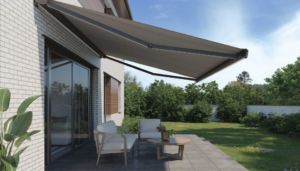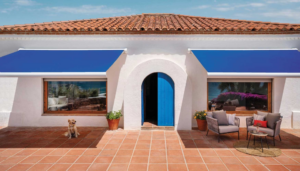Dark awnings do provide effective sun protection
With the arrival of high temperatures, we encounter many erroneous statements about the thermal performance of exterior awnings. That’s why the Spanish Association of Shading and Dynamic Solar Control (AESSO) believes it’s necessary to clarify a fundamental technical aspect: dark-colored awnings do not radiate heat into buildings through the glass.
It’s true that dark colors absorb more solar radiation than light colors, but the energy they absorb is re-emitted in the form of long-wave infrared radiation (FIR), which cannot pass through the glazing. Therefore, although a dark awning heats up more in the sun, it does not transmit that heat to the interior through the radiation mechanism.
What does pass through the glass and cause overheating is direct solar radiation (shortwave or NIR), which is why exterior shading systems—regardless of their color—are essential to block radiation before it penetrates the building. In addition to reducing thermal load, exterior solar control systems contribute significantly to visual comfort, preventing glare and enabling optimal management of natural light. They also provide privacy, improve the aesthetics of façades, and enable the design of more sustainable living spaces.
AESSO emphasizes the need to properly publicize the physical functioning of passive sun protection solutions. “Architectural design must be based on rigorous technical knowledge and not on intuitive perceptions that can lead to ineffective or erroneous decisions,” the association points out.
Sun protection devices, including dark-colored awnings, are an effective and proven tool for improving energy efficiency, interior comfort, and the adaptation of buildings to climate change.
For more information, AESSO can be contacted through its website www.aes-so.org.




